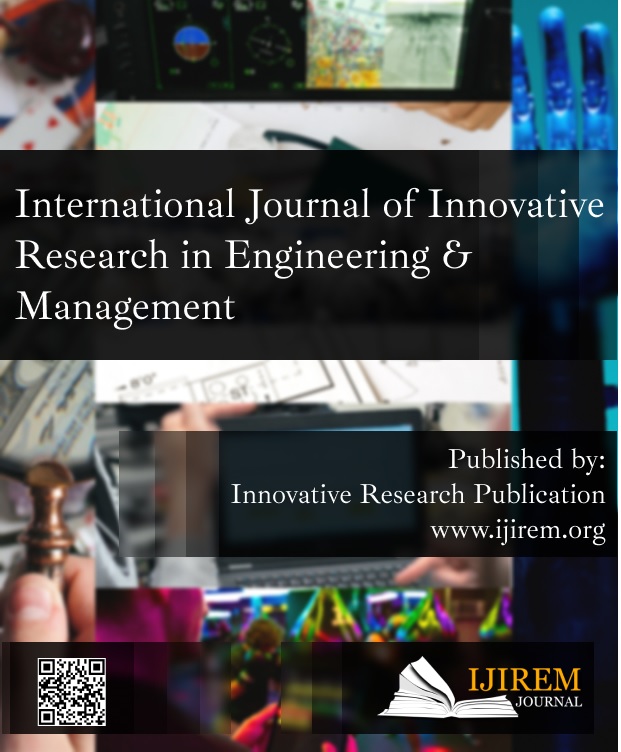An Analysis of Functional Properties of Coffee and Coffee By-Products
Keywords:
Beans, Chemicals, Coffee, Food, Silver SkinAbstract
Many individuals drink espresso consistently, making it quite possibly the most well-known beverage. Espresso's positive advantages have generally been credited solely to its most intriguing and explored part, caffeine, yet it is presently perceived that different synthetic compounds additionally add to the refreshment's valuable characteristics. Espresso's significance in staying away from a portion of the world's most not kidding and normal sicknesses upholds its arrangement as a practical drink. The organization of the green beans and the alterations that happen during broiling influence their attributes straightforwardly. Side-effects of espresso products of the soil handling, then again, might be considered conceivable helpful added substances for the food area. Espresso husks, strip, and mash, which make up around 45% of the cherry, are one of the most widely recognized side-effects of the espresso agro-industry and might be utilized for an assortment of uses, including caffeine and polyphenol extraction. Other espresso fabricating side-effects, as adhesive and material, have gotten less consideration, despite the fact that they may likewise have an extraordinary potential as a wellspring of fundamental parts. The utilization of cooked espresso silverskin as a wellspring of dietary fiber and for its antioxidative impacts has additionally been examined. At last, antioxidative impacts of squandered beans have been examined. The motivation behind this article is to gather current information on the practical qualities of espresso, espresso beans, and results, as well as the conceivable wellbeing benefits associated with them. The data in this assessment has been isolated into classifications in light of the sort of espresso item or side-effect.
Downloads
References
J. K. Virk, A. N. Kalia, V. K. Gauttam, M. Mukhija, and G. Rath, “Development and characterization of spheroidal antidiabetic polyherbal formulation from fresh vegetable juice: A novel approach,” J. Food Biochem., 2021.
P. Esquivel and V. M. Jiménez, “Functional properties of coffee and coffee by-products,” Food Res. Int., 2012. [3] S. K. Mangla et al., “A framework to assess the
challenges to food safety initiatives in an emerging economy,” J. Clean. Prod., 2021.
N. Caporaso, M. B. Whitworth, C. Cui, and I. D. Fisk, “Variability of single bean coffee volatile compounds of Arabica and robusta roasted coffees analysed by SPME GC-MS,” Food Res. Int., 2018.
N. Kumar and O. Jangir, “Multiantibiotic-resistant pattern against pathogenic bacteria isolated from ready to eat food in Ludhiana,” Asian J. Pharm., 2018.
K. Nieber, “The Impact of Coffee on Health,” Planta Medica. 2017.
A. Agrawal, A. Sharma, K. K. Awasthi, and A. Awasthi, “Metal oxides nanocomposite membrane for biofouling mitigation in wastewater treatment,” Mater. Today Chem., 2021.
P. K. Sharma et al., “SHI induced defects in chemically synthesized graphene oxide for hydrogen storage applications,” in AIP Conference Proceedings, 2016.
B. Yılmaz, N. Acar-Tek, and S. Sözlü, “Turkish cultural heritage: a cup of coffee,” Journal of Ethnic Foods. 2017.
R. S. Rajaura, I. Singhal, K. N. Sharma, and S. Srivastava, “Efficient chemical vapour deposition and arc discharge system for production of carbon nano-tubes on a gram scale,” Rev. Sci. Instrum., 2019.
M. Jeszka-Skowron, A. Sentkowska, K. Pyrzyńska, and M. P. De Peña, “Chlorogenic acids, caffeine content and antioxidant properties of green coffee extracts: influence of green coffee bean preparation,” Eur. Food Res. Technol., 2016.
A. K. Meena et al., “Evaluation of physicochemical parameters on the fruit of Terminalia bellirica Roxb,” Int. J. Pharm. Pharm. Sci., 2010.
A. Farah and C. M. Donangelo, “Phenolic compounds in coffee,” Brazilian Journal of Plant Physiology. 2006. [14] R. Takahashi and Y. Todo, “Coffee Certification and
Forest Quality: Evidence from a Wild Coffee Forest in Ethiopia,” World Dev., 2017.
B. Cheng, A. Furtado, H. E. Smyth, and R. J. Henry, “Influence of genotype and environment on coffee quality,” Trends in Food Science and Technology. 2016.
R. Guleria, N. S. Kaith, and R. Singh, “Improved dissolution of domperidone in solid dispersion with polymeric hydrophillic additive,” J. Chem. Pharm. Res., 2011.
J. H. O’Keefe, J. J. DiNicolantonio, and C. J. Lavie, “Coffee for Cardioprotection and Longevity,” Progress in Cardiovascular Diseases. 2018.
M. Wadhawan and A. C. Anand, “Coffee and Liver Disease,” Journal of Clinical and Experimental Hepatology. 2016.
P. K. Sonar, R. Singh, P. Bansal, A. K. Balapure, and S. K. Saraf, “R. Arboreum flower and leaf extracts: RP HPTLC screening, isolation, characterization and biological activity,” Rasayan J. Chem., 2012.
Jayanand, A. Sinha, R. Gupta, and D. V. Rai, “Effect of alcohol on biochemical properties and thermal stability of weight bearing bones in male Wistar rats,” Indian J. Exp. Biol., 2017.
N. Kumar and R. Tyagi, “Characteristic and application of anionic dimeric surfactants: A review,” Tenside, Surfactants, Detergents. 2019.
P. Mishra, D. Tiwari, M. M. Khan, and P. T. Manger, “Evaluation Of Oxidative Stress And Dyslipidemia In Diagnosed Hypertensive Patients,” Biochem. Cell. Arch., 2019.
A. K. Srivastava, A. Naseer, and A. Gupta, “Evaluation of Neurobehavioral and Biochemical Parameters of Poly Herbal Formulation on MPTP-Intoxicated Mice for the Treatment of PD,” Curr. Bioact. Compd., 2019.
